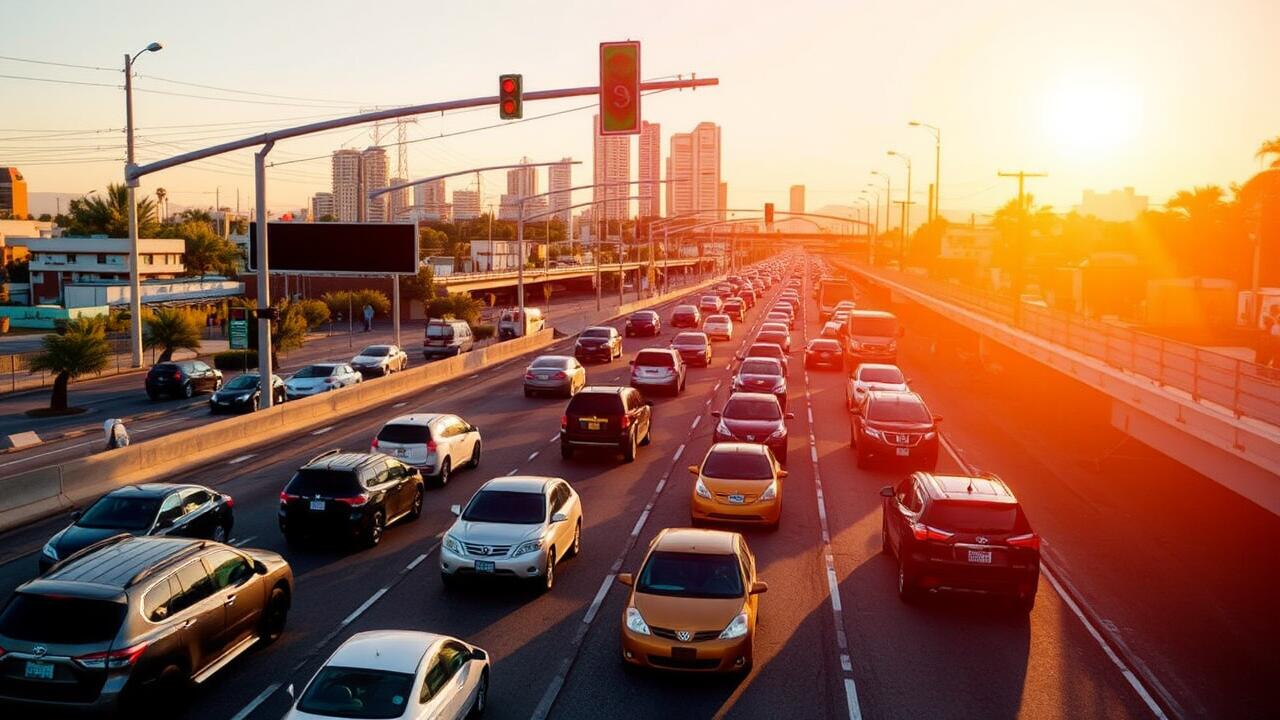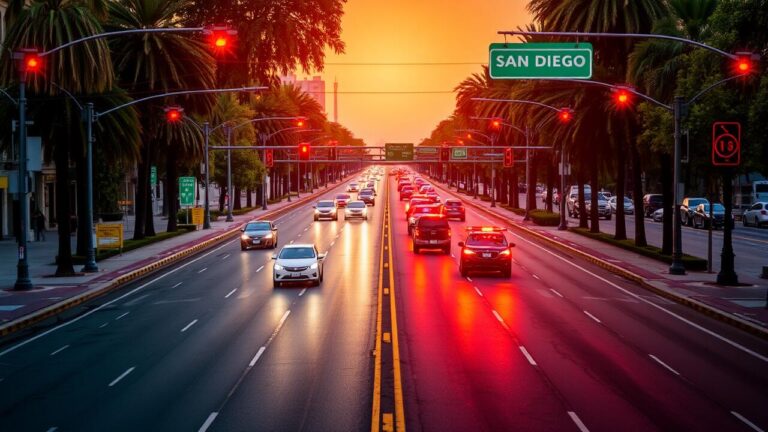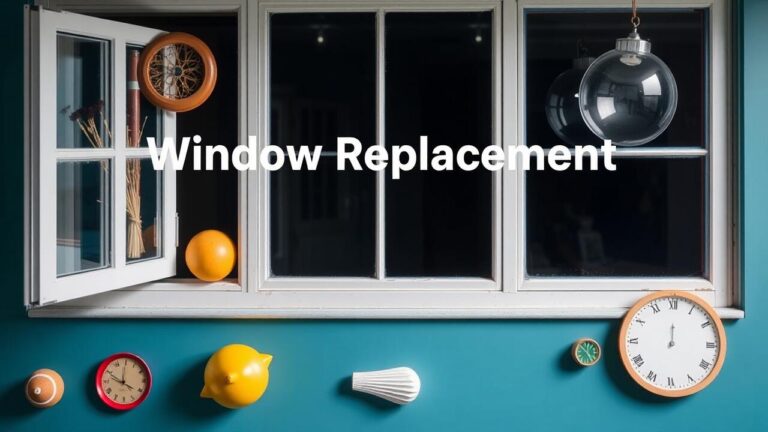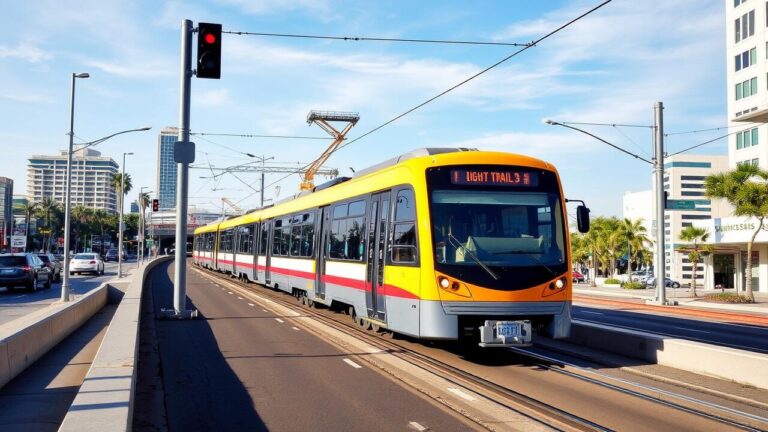Study Reveals Commuter Habits and Traffic Congestion Hotspots in San Diego Area
Table Of Contents
Study Reveals Commuter Habits And Traffic Congestion Hotspots In San Diego Area | Study Reveals Commuter Habits and Traffic Congestion Hotspots in the San Diego Area
Key Takeaways
- Insights into commuter behaviors and patterns in the San Diego region.
- Identification of key locations experiencing heavy traffic delays.
- Examination of elements leading to increased traffic congestion.
- Recommendations for mitigating traffic challenges in the area.
Study Reveals Commuter Habits And Traffic Congestion Hotspots In San Diego Area | Overview of Commuter Habits in San Diego
The Study Reveals Commuter Habits and Traffic Congestion Hotspots in San Diego Area highlights significant trends among commuters in this urbanized area. Many individuals rely on the metropolitan transit system, while others prefer active transportation options like biking and walking, particularly in downtown San Diego. The findings indicate that average daily traffic is heavily influenced by the volume of commuters traveling to and from work during peak hours. Traffic congestion is most pronounced during these high-traffic periods, underscoring the challenges faced in managing congestion within this bustling metropolitan area. Understanding these habits is crucial for devising effective strategies to mitigate traffic issues in the future.
Study Reveals Commuter Habits and Traffic Congestion Hotspots in San Diego Area | Key Findings from the Study
The Study Reveals Commuter Habits and Traffic Congestion Hotspots in San Diego Area highlights critical insights into how residents navigate their daily commutes. The research indicates a significant reliance on freeways for travel, with many commuters experiencing longer-than-average commute times. The California Department of Transportation (Caltrans) reported that certain routes, particularly those connected to the annual average daily traffic (AADT) metrics, are prone to congestion. This is especially true during peak hours, causing concerns for traffic safety across the county of San Diego.
Findings from the study also emphasize the role of public transit in alleviating congestion. The UC San Diego Blue Line, as part of the regional transportation plan, demonstrates the effectiveness of expanding transit options. The California Highway Patrol has noted trends in traffic reporting that suggest a growing need for improvements in public transport infrastructure. As commuter habits evolve, understanding these dynamics will be crucial for addressing the traffic congestion challenges facing the county of San Diego.
| Traffic Hotspot | Average Delay (Minutes) | Commuter Route | Peak Hours |
|---|---|---|---|
| I-5 South at La Jolla | 15 | I-5 | 7:00 AM – 9:00 AM |
| I-805 at Mira Mesa | 18 | I-805 | 5:00 PM – 7:00 PM |
| SR-52 East at Convoy St | 10 | SR-52 | 8:00 AM – 9:30 AM |
| I-15 North at Hammer Lane | 20 | I-15 | 4:30 PM – 6:30 PM |
Average Commute Times and Their Impact
Recent data from the Study Reveals Commuter Habits and Traffic Congestion Hotspots in San Diego Area indicates that the average commute time significantly affects the daily lives of residents. In San Diego, many passengers rely on vehicles to navigate the congested freeways, with longer travel times contributing to stress and decreased productivity. The current transportation framework relies heavily on bus routes and commuter rail options, yet many commuters face challenges finding efficient transit solutions.
Traffic calming measures could enhance the commuter experience by promoting use of the existing transit system. As parking lot congestion becomes increasingly problematic, improving access to bus and rail services is critical for reducing the number of vehicles on the road. The Study Reveals Commuter Habits and Traffic Congestion Hotspots in San Diego Area highlights the pressing need for innovative strategies to improve commute times, ultimately benefiting both passengers and the overall transportation landscape in the region.
Major Traffic Congestion Hotspots
The analysis presented in the study highlights critical areas in San Diego where congestion tends to peak, illustrating significant traffic delays on major boulevards, roadways, and highways. Commute patterns identified by the San Diego Association of Governments show a pronounced reliance on mass transit options such as the trolley and rapid bus services. Insights from UC San Diego and the University of San Diego suggest that urban planning needs to account for the growing population and evolving commuter habits. Comparisons with cities like Jersey City reveal that enhancing public transportation infrastructure could relieve some of the pressures on congested routes, ultimately improving the overall traffic flow in California’s metropolitan areas. The findings underscore the urgent need for strategic urban development to address highlighted congestion hotspots effectively.
Identifying the Most Congested Areas
The study reveals commuter habits and traffic congestion hotspots in San Diego Area, pinpointing several congested locations that frequently experience heavy traffic density. San Diego commuters often face challenges at crucial points like Interstate 5 and Interstate 15, where traffic density peaks during rush-hour congestion. Traffic experts highlight how these areas are vital components of the national highway system, directly impacting daily traffic patterns and overall commuting experiences.
Highway patrol reports indicate that certain intersections and exits on the freeway system contribute significantly to congestion incidents. The study reveals commuter habits and traffic congestion hotspots in San Diego Area found that even minor accidents can exacerbate congestion in these hotspots, leading to prolonged delays for drivers. Addressing these congestion locations is essential for improving the flow of traffic and reducing frustration among San Diego commuters.
- Identifying peak traffic times helps in planning alternative routes.
- Enhancing public transportation options can alleviate congestion in these areas.
- Implementing real-time traffic monitoring can assist in managing flow better.
- Encouraging carpooling initiatives may reduce the number of vehicles on the road.
- Upgrading intersections with modern traffic signals can improve traffic flow.
- Increased awareness campaigns about congestion can educate commuters.
- Collaboration with local businesses to stagger work hours may ease rush hour traffic.
Time of Day Patterns in Traffic Flow
Peak hours for vehicle traffic in the San Diego region highlight significant patterns that traffic managers must address. The Study Reveals Commuter Habits and Traffic Congestion Hotspots in San Diego Area indicates that weekday traffic experiences the heaviest congestion during morning and evening rush hours. This demand strains the regional transportation system, challenging its transportation capacity and making it crucial for Diego workers to identify opportunities to avoid traffic. Low-traffic Mondays often present an exception, giving commuters a reprieve from the usual congestion.
Weekend traffic shows distinct trends compared to regular weekdays. Many residents take advantage of numerous transit options available for leisure activities and outings. These patterns not only reflect the preferences of San Diego’s population but also underscore the need for adaptive management strategies in traffic flow. Understanding these variances can help traffic managers develop effective solutions to enhance overall commuter experience throughout the week.
Factors Contributing to Traffic Congestion
The findings from the Study Reveals Commuter Habits and Traffic Congestion Hotspots in San Diego Area highlight several factors contributing to traffic congestion in the Diego region. An increasing number of one-way passenger trips combined with limited open freeways puts pressure on the transportation system. The absence of a robust pedestrian counter network can deter non-motorized traffic, exacerbating vehicular congestion. Traffic reporting systems that effectively monitor traffic conditions are crucial for understanding patterns in commute times. Cities must prioritize local transportation projects that enhance transportation choices and improve the overall efficiency of the transportation system to relieve congestion.
Population Growth and Urban Development
Rapid population growth in San Diego County has led to increased pressure on local roadways and transit systems. The “Study Reveals Commuter Habits and Traffic Congestion Hotspots in San Diego Area” highlights how expanding residential developments have outpaced infrastructure improvements. As the number of commuters rises, congested commute corridors emerge, making the journey for bus drivers and daily travelers more challenging. The demand for rapid bus routes has intensified, as weekday transit ridership is influenced by city movement patterns that are increasingly shifting toward urban centers.
Urban development in San Diego often prioritizes residential areas over essential transportation networks. This trend can exacerbate commute costs for residents who rely on local roads, especially in traffic hotspots identified by the study. The result is a complex web of congestion that affects overall mobility within the region. With the ongoing population surge, strategies to refine transportation planning and enhance connectivity will be crucial for maintaining the quality of life in Diego County.
Public Transit Usage and Availability
The analysis from the study reveals commuter habits and traffic congestion hotspots in the San Diego area highlights the pressing need for improved transit options. While the region boasts an extensive network of regional highways and fast roads, weekday transit productivity tends to lag behind the demands of a growing population. The study indicates that traffic volumes continue to rise, exacerbating congestion on critical routes such as State Route 52 and the Blue Line Trolley, which serve as lifelines for commuters seeking to navigate the city efficiently.
The availability of transportation services also plays a crucial role in shaping commuter behavior. Many residents rely on specialized transportation to access various parts of Diego, yet the current infrastructure often fails to meet the needs of the population. With road speeds frequently impacted by high traffic, enhancing public transit options could offer a viable solution to alleviate congestion and improve overall mobility within the urban landscape. As the study emphasizes, a strategic focus on transit development could significantly reduce reliance on personal vehicles, thereby mitigating traffic hotspots identified across the area.
Strategies to Alleviate Traffic Issues
The findings from the study reveal critical insights into commuter behaviors and traffic congestion hotspots in the San Diego area. Effective strategies must address the increasing need for open highways and optimized vehicle lanes to accommodate the growing number of unlinked passenger trips. The San Diego Association emphasizes enhancing mobility, particularly during peak hours, to alleviate congestion impacts on residents’ round-trip commutes. Implementing better urban planning can streamline highway travel and reduce bottlenecks, especially in high-priced cities like Los Angeles, Long Beach, and Anaheim. Expanding roadway lanes and improving public transit options are essential steps toward achieving sustainable travel solutions that benefit the entire city.
Recommendations for Better Urban Planning
Urban planning strategies should focus on enhancing the complete road network and improving public transportation options in response to findings from the study. With cars dominating rush-hour commuting, transportation officials can target top hotspots where congestion is most severe. This includes increasing trolley ridership and optimizing bus transit routes to accommodate California households that rely on these services. Adjusting fares based on demand may also incentivize more residents to utilize public transport rather than driving.
Creating dedicated lanes for buses and trolleys could significantly alleviate pressure on the highway system during peak hours. By prioritizing public transport improvements, cities can reduce the number of cars on the road, benefiting drivers and the overall traffic flow. Engaging community stakeholders in the planning process ensures that strategies align with the needs of the area, resulting in a more efficient transportation landscape. The insights from the study reveal that effective urban planning is crucial in addressing traffic congestion challenges and enhancing daily commutes.
Role of Technology in Traffic Management
Advancements in technology can serve as a crucial urban planning tool to address the issues highlighted in the Study Reveals Commuter Habits and Traffic Congestion Hotspots in San Diego Area. Implementing smart traffic management systems can optimize the flow of vehicles during the congested Friday morning commute. These systems can analyze real-time data from roads and the entire highway system, allowing for the efficient routing of both personal and commercial vehicles. Enhancements such as adaptive traffic signals and GPS-enabled navigation apps can direct drivers to their nearest destinations, helping to alleviate bottlenecks along popular routes like those heading to the beach or Anaheim.
The integration of functional mass transit options, such as the MTS trolley and the upcoming mid-coast trolley, is also essential in minimizing traffic congestion. By improving accessibility and frequency of service, more commuters may opt for public transportation over single-occupancy vehicles. This shift can significantly reduce the strain on local roads, promoting a more sustainable urban environment. The data from the Study Reveals Commuter Habits and Traffic Congestion Hotspots in San Diego Area highlights the need for a multi-faceted approach that includes technological solutions alongside improved transit options.
Conclusion
The findings from the study reveal critical insights into commuter habits and traffic congestion hotspots in the San Diego area. Identifying locations with limited mobility access highlights the urgent need for improvements in public transit options. Initiatives such as the mid-coast trolley project aim to alleviate rush hour challenges by offering alternative routes that reduce travel times. Understanding travel patterns, including boardings and regional bike trips, can help city planners optimize routes and enhance overall commuter experiences. The study’s emphasis on these key factors underscores the urgency of implementing effective strategies to tackle the persistent congestion affecting daily travel in San Diego.
FAQS
How does the latest commute report affect highway traffic in the San Diego area and what monitors traffic conditions during peak hours?
The latest commute report highlights significant San Diego changes in highway traffic patterns and emphasizes the importance of monitors traffic conditions to provide real-time updates during peak hours, particularly in relation to trends observed in the Angeles/Long Beach/Anaheim corridors.
What factors contribute to traffic congestion hotspots in the San Diego area according to recent studies?
Recent studies reveal that various factors contribute to traffic congestion hotspots in the San Diego area, including high commuter volume during peak hours, road construction, and limited alternative routes. Understanding these elements can help in planning better commuting strategies and improving overall traffic conditions.
What strategies can be implemented to reduce traffic congestion hotspots in the San Diego area based on the findings of recent studies?
Recent studies suggest that implementing strategies such as optimizing traffic signal timing, enhancing public transportation options, and promoting carpooling can effectively reduce traffic congestion hotspots in the San Diego area. By focusing on these methods, the city can improve overall traffic flow and encourage more sustainable commuting practices.
What are the common commuter habits identified in the study about the San Diego area, and how do they influence traffic congestion?
The study highlights that common commuter habits, such as peak travel times and preferred routes, significantly influence traffic congestion. Commuters in the San Diego area often choose to travel during rush hours, leading to increased traffic on major highways and intersections. By understanding these habits, city planners can better address congestion issues and implement effective traffic management strategies.
How can residents of the San Diego area adapt their commuting habits to alleviate traffic congestion hotspots identified in recent studies?
Residents in the San Diego area can adapt their commuting habits by carpooling, using public transportation, or adjusting their travel times to avoid peak hours. These strategies can significantly help in alleviating traffic congestion hotspots identified in recent studies, making commutes smoother for everyone.







